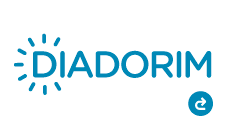Restructuring the Digital Systems Laboratory in Computer Engineering Course
DOI:
https://doi.org/10.5216/ijaeedu.v5i1.50482Palabras clave:
Computer Architecture, Digital Systems, Problem-based LearningResumen
It's not difficult to find students of Computer Engineering, at the University of São Paulo, in São Carlos School of Engineering, complaining about the way that practical classes are given during the graduation. What is said is that these classes only reproduce results already seen in theory classes, that they are limited by a laboratory script and, at the end, nothing new is added to their knowledge, making them a little bit frustrated about the classes. In this paper, it's shown how PBL (Problem-based Learning) was used in Digital Systems Laboratory, a 4-semester discipline, to start a change in this situation. The main purpose of the project was to use all the knowledge in digital logic, already seen in theory classes by the students, to build the main modules of a basic processor: arithmetic logic unit (ALU), for combinational logic studies; register bank, for sequential logic studies; and control unity, used to study finite state machines. This new way to teach each topic of the discipline brought new challenges to the students, now free to solve them the way they wanted to, once only the specification of inputs and outputs were given. Using FPGA boards and circuit simulators for development, the students succeeded in their task and the modules were built and tested in a test platform, developed to allow the simulation of the entire processor. This project had a positive feedback, either reflected in grades (in laboratory and in related theoretical disciplines) and also in the student's motivation (although some difficulties was found) helping them to understand how different concepts seen during the graduation course are related. This feedback is now helping the development of a new material for next classes, in order to make specifications clearer, correct bugs in the test platform and improve some features for debug.Citas
E. E. Filho, L. R. C. Ribeiro,” Innovating in the teaching of business administration: an experiment with
problem-based learning (PBL)”, Cadernos EBAPE.BR, vol. 6, August 2008.
R. A.. Pilgrim., “Design and Construction of the Very Simple Computer (VSC): A Laboratory Project for
na Undergraduate Computer Architecture Course”, in Bruce J. Klein; Cary Laxer & Frank H. Young, ed.,
'SIGCSE' , ACM, 1993, pp. 151-154.
B. J. Rodriguez, “A Minimal TTL Processor for Architecture Exploration” Proceedings of the 1994 ACM
symposium on applied computing, 1994, pp. 338–340.
D. Feinberg, “A Simple and Affordable TTL Processor for the Classroom”, Computer Science Education,
Vol. 17, Issue 2, 2007.
D. M. Harris, S. L. Harris, “Digital Design and Computer Architecture”, Morgan Kaufmann, 2007.
S. Brown, Z. Vranesic , “Fundamentals of Digital Logic with Verilog Design”, McGraw-Hill, 2002
Descargas
Publicado
Número
Sección
Licencia
Copyright
The author is responsible for the following statements by submitting an article electronically in the International Journal of Alive Engineering Education (IJAEEdu):
a) States that the document in question was reviewed by an expert in English language and it is an original work and it holds the prerogative to grant the rights contained in this license. It also states that the document does not infringe, as far as it is possible to know the rights of any other person or entity.
b) If the document in question contains material which does not hold the copyright, the author states have obtained the copyright holder’s permission to grant the Universidade Federal de Goiás (UFG) the rights required by this license, and that such material whose rights are third is clearly identified and acknowledged within the text or content of the document.
c) States that the study was conducted in accordance with the ethical standards of all applicable institutional, local, national and international guidelines.
d) It also states that any person appointed as author or co-author of the document is aware of it and agrees to be so appointed.
Authorization Form
As responsible for the submission of the document, I authorize the School of Electrical, Mechanical and Computer Engineering of the Federal University of Goiás to provide the paper free of charge, through the Electronic System for Publishing Magazines UFG (SEER / UFG) or in printed form, without compensation of copyright, in accordance with Law No. 9610/98. Is allowed, reading, printing and / or download, as a promotion of the Brazilian scientific production. Any use of the work not authorized under this license or the copyright law is prohibited.



